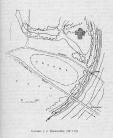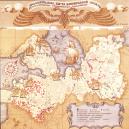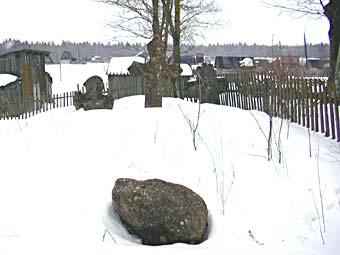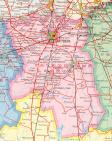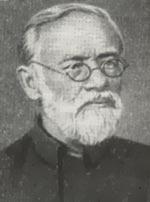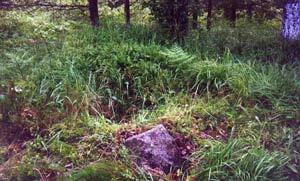Articles
/
Zhalniks (sepulcrums).
Zhalniks (sepulcrums).
Subject /
Relics
Zhalniks (sepulcrums), burial places of the rural population of the Novgorod land of the 12th -15th centuries. On the Leningrad Oblast territory there are known zones of the Old Russian farming colonization: the Luga-Oredezh region, the Izhora Hills, the north-eastern Chud Lake region, southern outskirts of the Ladoga Lake region. Zhalniks are the earth graves of round, oval and quadrangular shape with surface stone facing or marked with single-stood boulders, stone-steles. They were gradually changed Old Russian barrows. So-called "Kurgans-zhalniks", whose mounds were not higher then the circle of boulders and grave dimensions, appeared in the 12th- early 13th centuries. As far as deepening the under-kurgan pits, mounds vanished. Stone crosses, placed at the head of the grave, appeared in the early 14th century. Zhalnik graves are located at the periphery of mounds' necropolis and on free plots between mounds, rarely they form single cemetery. The graves are presented with single earth burials and collective family graves with several burials, fences of that are collected in the united system. The appearance of "Zhalnik rows" up to fourty metres long, which include up to several tens of the burieds, is likely connected with epidemics of the 14th-15th centuries. The funeral equipment is presented with not numerous jewelleries, ceramics. Burials in zhalniks ("Kolomishchi") were practice in the outskirts Chud pogosts right up to the 16th century.
Authors
Plotkin, Konstantin Moiseyevich
Geography
Topographical landmarks/Izhora Hills, the
Topographical landmarks/Luga-Oredezh Region
Topographical landmarks/Prichudye North-eastern
Topographical landmarks/Priladozhye
Bibliography
Репников Н.И. Жальники Новгородской земли // Известия Гос. Академии истории материальной культуры. Т. IX. Вып. 5. Л., 1931
Спицын А.А. Сопки и жальники // Записки Русского Археологического Общества. Т. XI. Вып. 1-2. СПб., 1899, С. 149-154
Лапшин В.А. Археологическая карта Ленинградской области. Ч. 1-2. Л.; СПб. 1990-1995, С. 149-154
Subject Index
Stone Crosses
Zhalniks (sepulcrums).
Mentioned in articles:
|
hidden
|
Ancient settlements (selishche)
Selishches, remains of unfortified settlements, discovering according to the presence of the culture lay and withdrawn material. The search of ancient settlements is embarrassed for lack of external indications. More then 120 ancient settlements... more
|
|
|
|
hidden
|
Archaeological monuments
Archaeological monuments of the Leningrad Oblast are settlements, grads, burial grounds, religious objects and other material trails of the past. Settling the oblast territory took place during the Mesolithic period. The age of the most ancient... more
|
|
|
|
hidden
|
Beseda, settlement
BESEDA, a settlement in Volosovo District. Population: 1000. Initially, it was an estate built by M. S. Lalayev in the early 19th c. The estate was purchased by A. F. Weimarn in 1829. P.A. Weinmarn, his son, was a resident in B. and he bequeathed ... more
|
|
|
|
hidden
|
Gatchina District
GATCHINA DISTRICT, municipal entity. Population: 111,600. Area: 2850.3 sq. km. Established in 1927. Due to renaming of Gatchina Town, it was called Trotsk District in 1927-29, and Krasnogvardeisk District in 1929-44.Gatchina district borders with... more
|
|
|
|
hidden
|
Repnikov, Nikolay Ivanovich (1882-1940), a scientist
Repnikov, Nikolay Ivanovich (1882-1940), an archaeologist, researcher of Staraya Ladoga and other archaeological sites of the Leningrad Oblast. From 1902 he worked at the Archaeology Committee and the Russian Archaeologic Society, after the... more
|
|
|
hidden
|
Spitsin, Aleksandr Andreyevich (1858-1931), a scientist
Spitsin, Aleksandr Andreyevich (1858-1931), an archaeologist, Corresponding Member of the Academy of Scienses (1927). He graduated from the St. Petersburg University in 1882. From 1892 Spitsin worked at the Archaeology Committee (the Committee was... more
|
|
|
|
hidden
|
Zhalniks (sepulcrums).
Zhalniks (sepulcrums), burial places of the rural population of the Novgorod land of the 12th -15th centuries. On the Leningrad Oblast territory there are known zones of the Old Russian farming colonization: the Luga-Oredezh region, the Izhora... more
|
|
|
|







